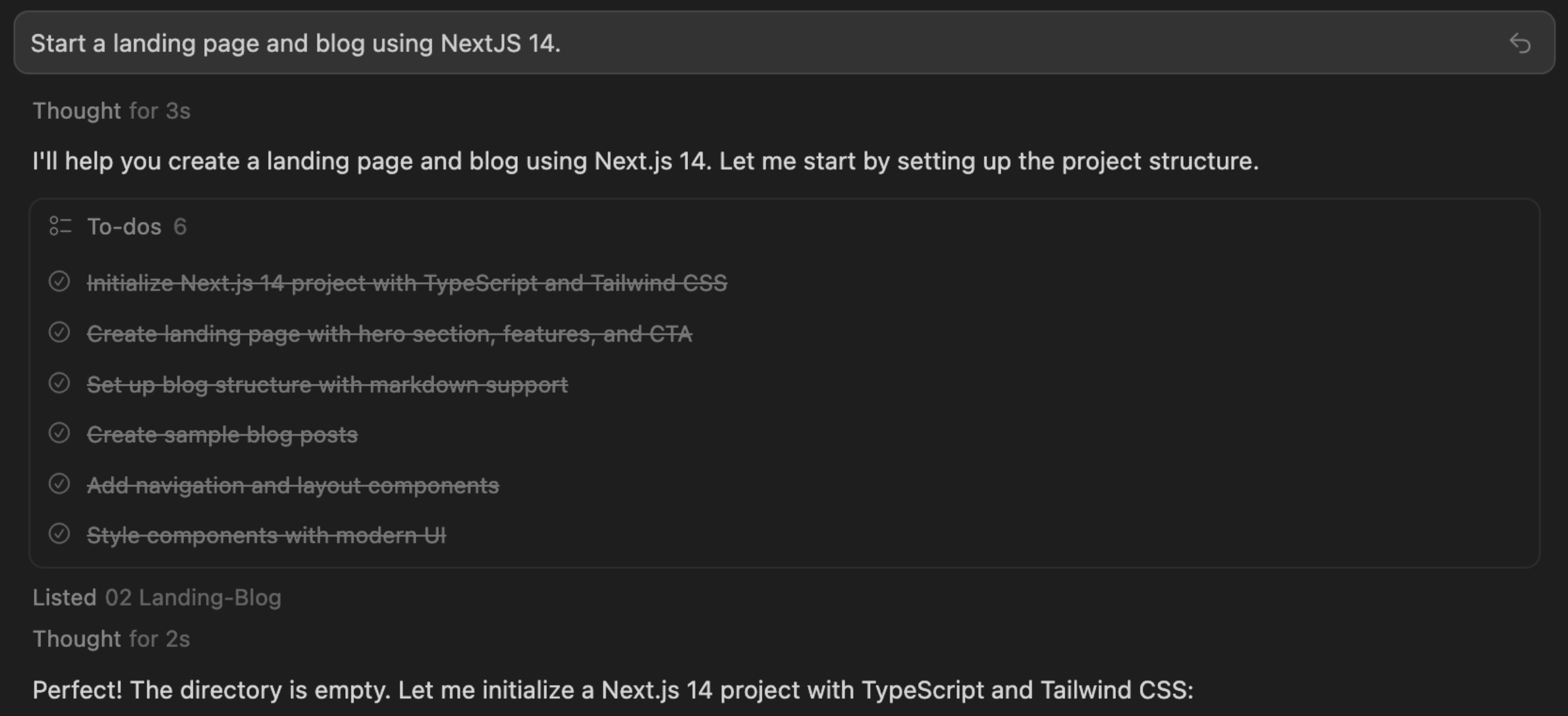Prompt. Tinker. Ship.
I went from having an idea to shipping this site in one evening. The achievement wasn’t in the complexity of the final product. It was in the speed.
Within a few hours, I went from typing a prompt into Cursor to sharing a live site with friends. AI-assisted IDEs and vibe coding tools (natural-language app builders like v0 or Lovable) are collapsing the path from idea → MVP and changing what even non-experts can ship.
As someone with some front end development experience, I sat down, installed Cursor, which is an AI-assisted IDE, and gave it the simplest of prompts:
“Start a landing page and blog using NextJS 14.”
I watched as Cursor created a plan, checked off to-dos, and built the scaffolding. In seconds, Cursor wrote 8,000 lines of code across nineteen files to produce a working Next.js app built with TypeScript and Tailwind CSS. Once the dev server was running, I spent the next few hours modifying code, editing copy, tinkering with the visual design, pushing changes to Github, and finally deploying the site with Vercel.

For this project, I wanted control. I wanted my own code, my own design, my own content, and the freedom to move it all wherever I liked. I wanted a site I could tweak, break, and fix. No CMS. No templates. Just Markdown and a simple workflow. Cursor let me build exactly that.
I predict that we’ll see motivated non-experts start projects as prompts, not wireframes. They’ll open AI-assisted IDEs or vibe coding tools instead of design tools. The bar to produce a working MVP has dropped. No coding bootcamp, rigid website builder, or developer required. This accessibility will fuel a wave of niche, personal software and faster prototypes for more complex projects.
I’m curious about what happens next. What security or privacy flaws will surface if AI produces “slop” code? How brittle are these sites? Will developers spend more of their time cleaning up AI-written code? And as LLMs are fundamentally reshaping how people write (and therefore think), will they reshape how we go about programming?
To be clear, I didn’t become a better front end developer overnight. Cursor built the boilerplate and a dark-mode switcher, among other aspects of my site. But it did help me understand how the pieces fit together. When I highlighted unfamiliar code snippets, it explained how they worked in plain English. That loop of generation-and-explanation taught me more in an evening than I expected.
The hardest judgment call was knowing where to accept “this works for now” versus insisting that “I fully understand this.” Skipping deeper dives into CSS or JavaScript saved time, but at what cost? For quick, low-risk projects, speed trumps reliability. Anything beyond that (e.g. handling PII, complying with regulations, implementing hybrid search, etc.) still demands real engineering depth.
Taste still matters. These tools are only as good as the prompts and material they ingest. They can edit drafts, generate boilerplate code, and fix errors among other tasks. But they can’t come up with a convention-defying design or original idea. The ceiling remains human.
I shipped faster not because I mastered front-end development, but because the workflow itself has changed. If AI lowers the floor, then our ceilings will depend on our taste and our motivation to revisit what we ship.
Note: Thank you to Nat Eliason, whose Build Your Own Apps course helped me build this site.
Tech stack: Next.js 14, TypeScript, Tailwind, Vercel.